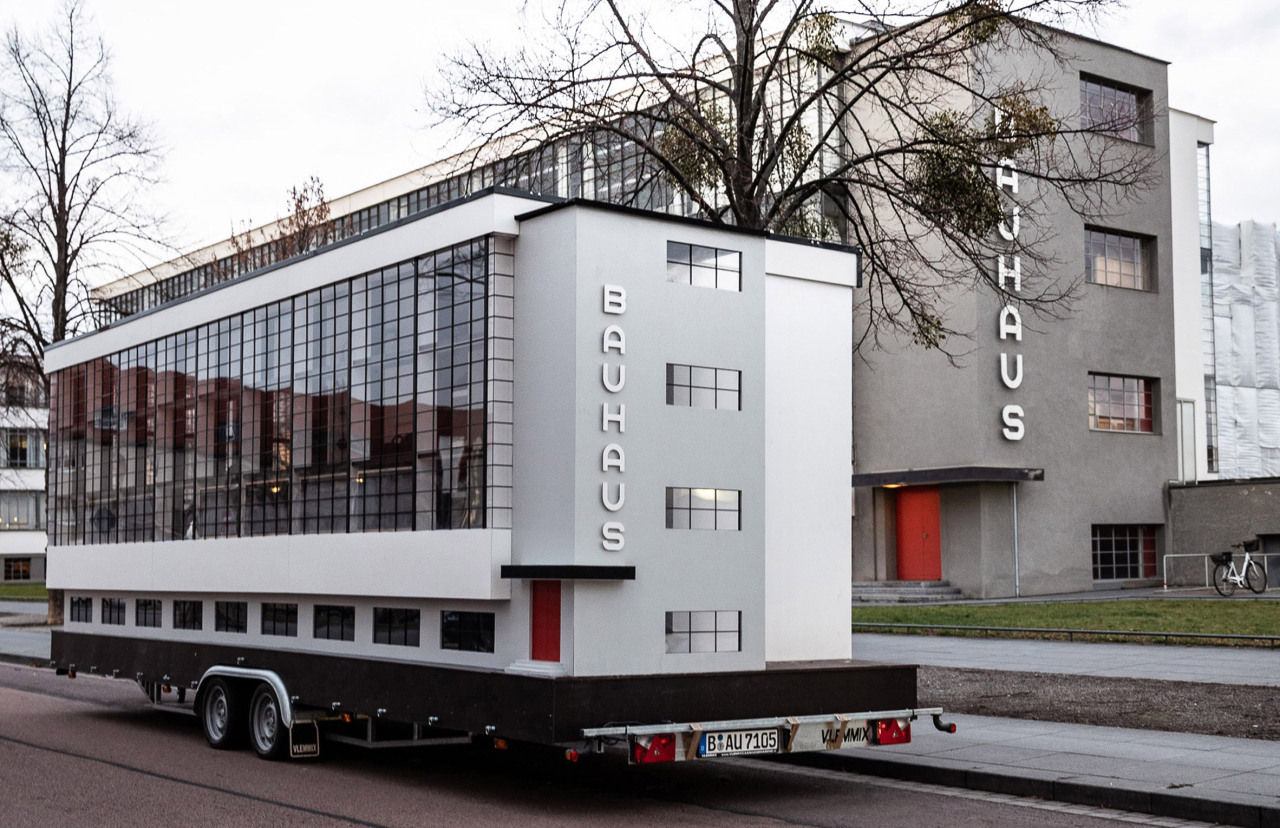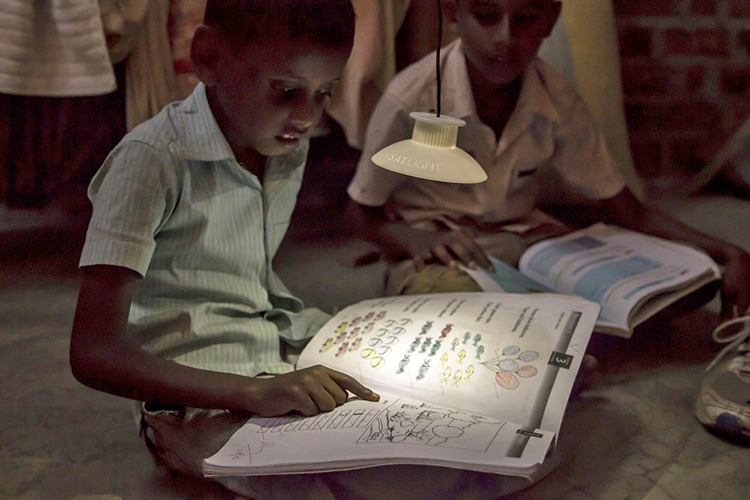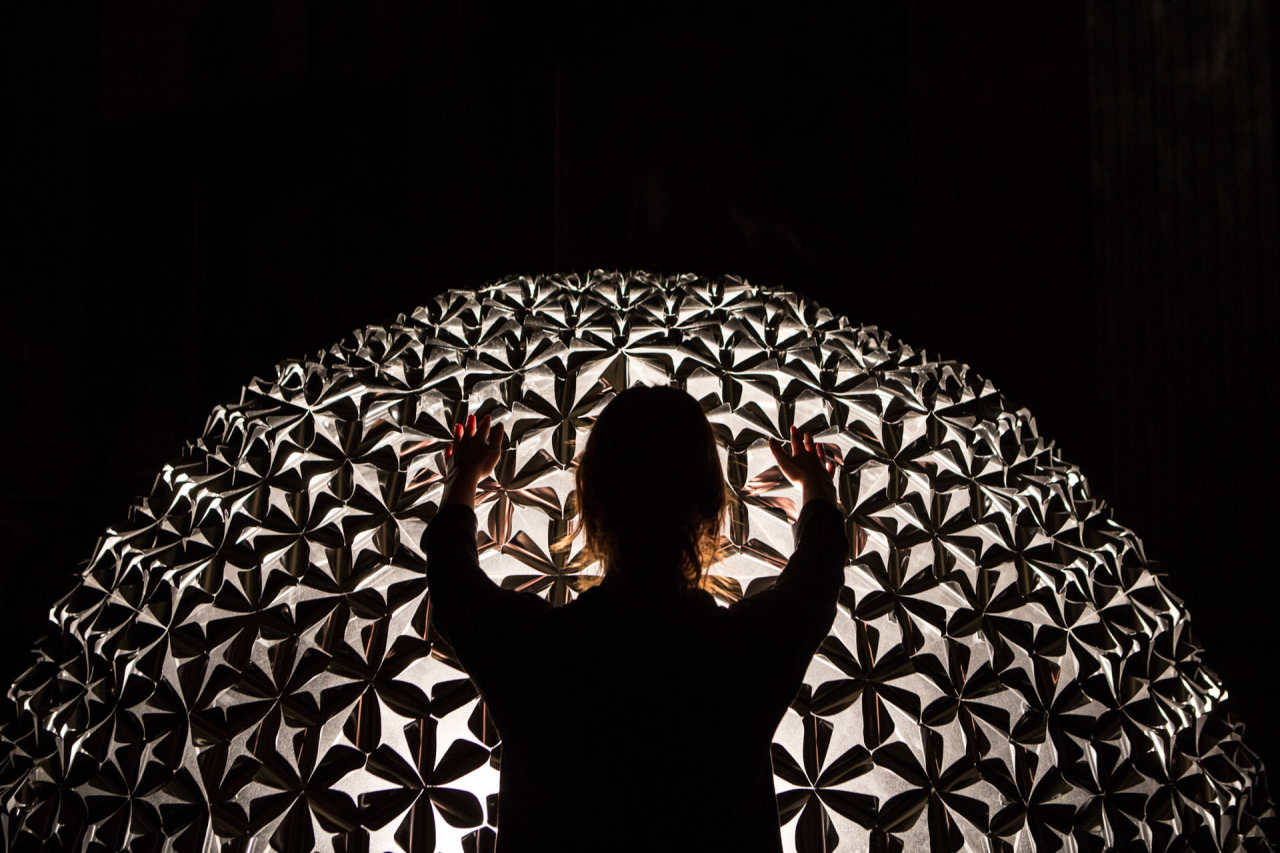Bauhaus bus stops at Gwangju Design Biennale 2019
Gwangju Design Biennale 2019 will feature works that offer solutions to social and environmental issues, under the title of ‘Humanity’
By Shim Woo-hyunPublished : May 29, 2019 - 17:13
The Bauhaus school’s workshop wing in the German town of Dessau is well known for its stark white volumes, gridded windows and the Bauhaus sign that runs vertically down the facade.
The iconic building, conceived by the school’s founding director Walter Gropius in 1919, will be shown at the upcoming Gwangju Design Biennale 2019, which kicks off Sept. 7 for a 55-day run.
The iconic building, conceived by the school’s founding director Walter Gropius in 1919, will be shown at the upcoming Gwangju Design Biennale 2019, which kicks off Sept. 7 for a 55-day run.

Coming to the festival is a 15-square-meter mobile version of the monumental modernist building, set on a trailer. The project is known as the Bauhaus bus.
Designed by Berlin-based architect Van Bo Le-Mentzel, it features the same gridded glass walls that wrap around the building as well as the famous lettering down one side.
Savvy Contemporary -- the team in charge of the project and related forums -- will install the work in the design festival’s second gallery space, with the trailer removed, according to curator Kang Seung-min, who is in charge of the second exhibition hall.
The miniature at the second exhibition hall will run parallel with works by local artists, designers and architects, in which they show how they perceive Bauhaus and its modernist values in contemporary Korea. Paju Typography Institute is one of the local participants.
“Bauhaus brought design into the realm of the public. The founding manifesto of Bauhaus, which largely aims to bring public good through design, seems to resonate well with the upcoming design festival’s main subject,” Kang said.
The second exhibition hall will also feature mock-ups of 21 suggestions for urban city planning.
“The urban landscapes are changing quickly these days. If an area in a city used to have its own distinctive function or characteristic that other areas of the city did not have, a location in a city now is becoming more like one-stop shopping,” said Lee Gil-hyung, the chief director of the design biennale.
“The exhibition hall will show different types of contemporary urban planning models in which different kinds of services are clustered.”
The design biennale, in its eighth edition this year, is titled “Humanity” a combination of the words “human” and “community,” added Lee.
“The essence of design lies in creating value (for the) humans and community that they make up. The design festival will feature works that can offer solutions to solve issues in various communities,” Lee said.

For instance, “Gravity Light” by Graham Brett is one work that seeks to improve the lives of those with limited access to electricity. “Gravity Light,” the name of a portable lighting device, generates electricity using gravity. The device, which does not need batteries or sunlight to run, only requires lifting a weight for several seconds to generate some 20 minutes of light upon descent.
The Gwangju Design Biennale 2019 will also show works that invite interaction from visitors.
“Lotus Dome,” by Dutch artist and architect Daan Roosegaarde, is an interactive artwork made up of hundreds of flowers, using foil that the artist has devised. The sphere-shape installation of flowers is designed to respond to visitors’ temperature.

There are also interactive media works that use new technologies like projection mapping.
A lecture by Markus Weisbeck, a professor for graphic design at Bauhaus-Universitat Weimar, is one of several lectures and forums at the biennale open to the public.
By Shim Woo-hyun (ws@heraldcorp.com)







![[Graphic News] More Koreans say they plan long-distance trips this year](http://res.heraldm.com/phpwas/restmb_idxmake.php?idx=644&simg=/content/image/2024/04/17/20240417050828_0.gif&u=)
![[KH Explains] Hyundai's full hybrid edge to pay off amid slow transition to pure EVs](http://res.heraldm.com/phpwas/restmb_idxmake.php?idx=644&simg=/content/image/2024/04/18/20240418050645_0.jpg&u=20240419100350)






![[From the Scene] Monks, Buddhists hail return of remains of Buddhas](http://res.heraldm.com/phpwas/restmb_idxmake.php?idx=652&simg=/content/image/2024/04/19/20240419050617_0.jpg&u=20240419175937)

![[KH Explains] Hyundai's full hybrid edge to pay off amid slow transition to pure EVs](http://res.heraldm.com/phpwas/restmb_idxmake.php?idx=652&simg=/content/image/2024/04/18/20240418050645_0.jpg&u=20240419100350)

![[Today’s K-pop] Illit drops debut single remix](http://res.heraldm.com/phpwas/restmb_idxmake.php?idx=642&simg=/content/image/2024/04/19/20240419050612_0.jpg&u=)